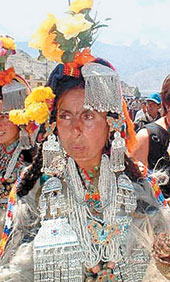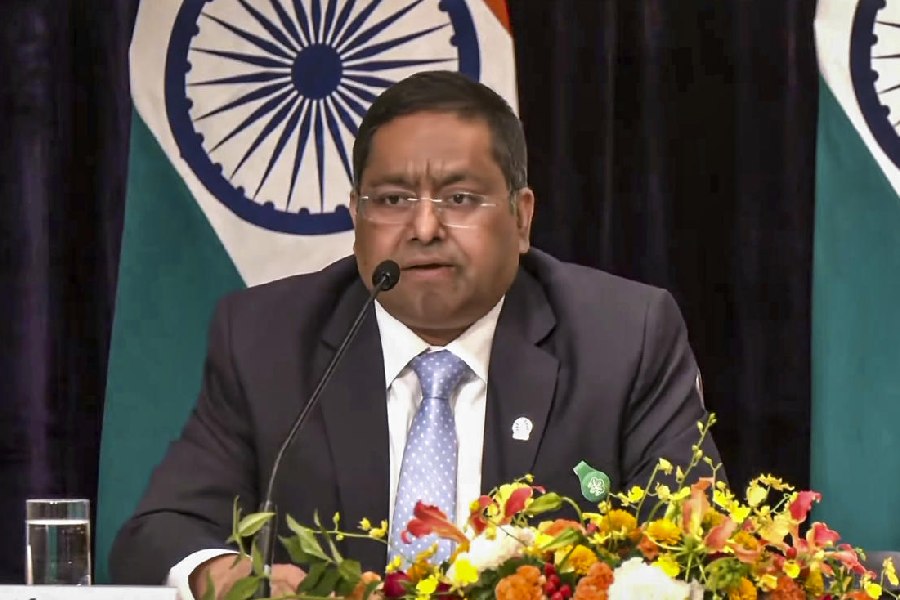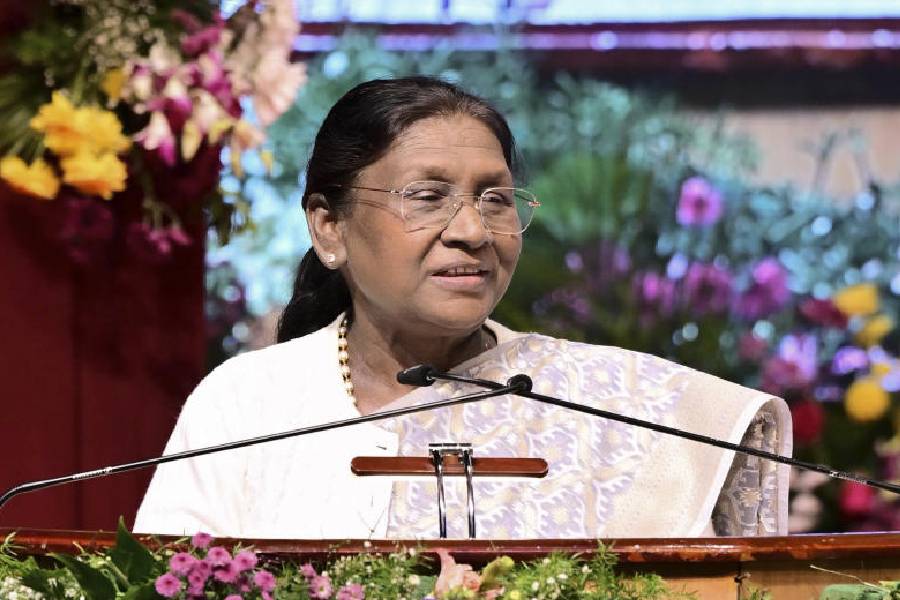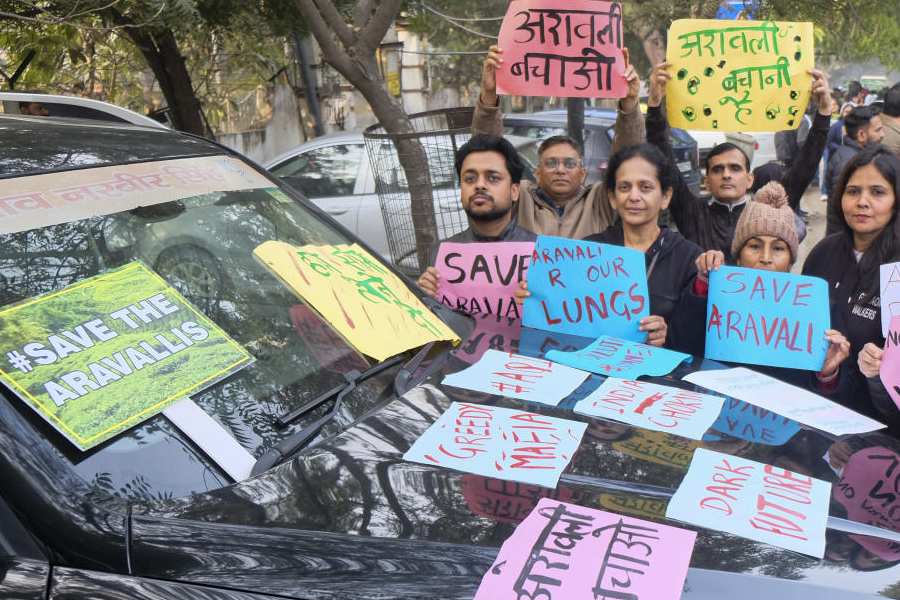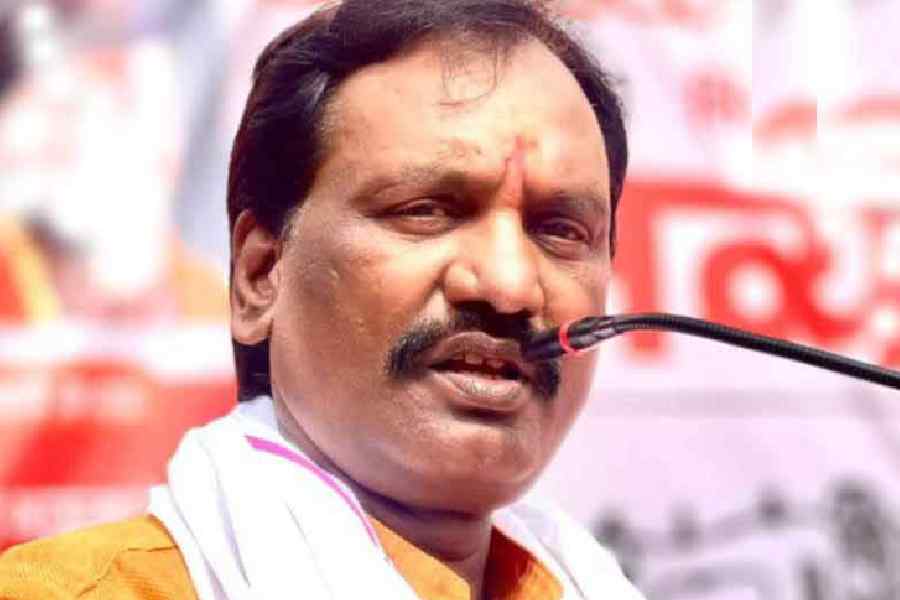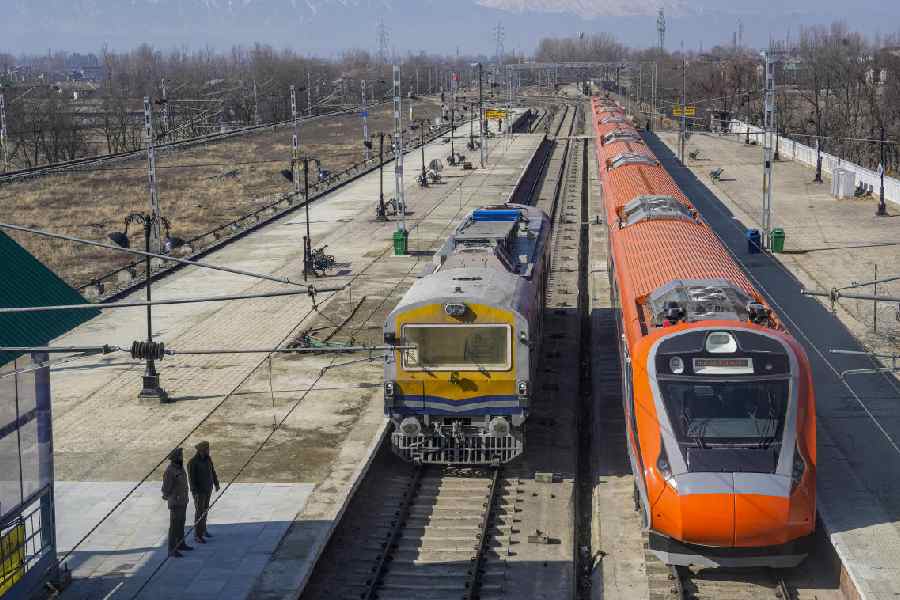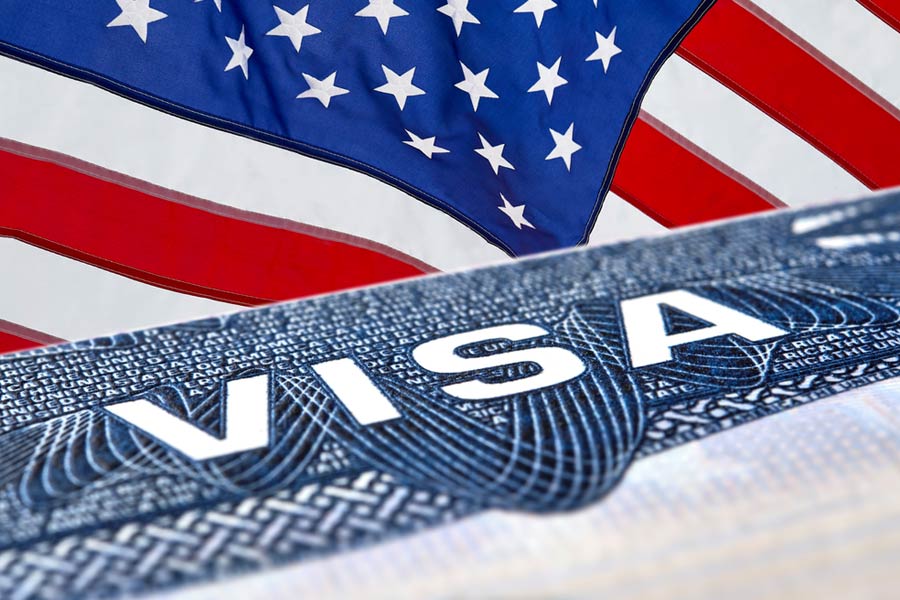 |
India is a rich land, which has attracted invaders from Central Europe and Asia ? all of whom have left their imprint on this land, its religions and its lifestyles. As a result, today, Indian celebrates more festivals than any other country. Apart from the regular festivals, India also hosts many fairs that attract tourists from all over the world. The birthdays of gods, goddesses, saints and prophets, historical happenings, all find expression in colourful festivities. These fairs are occasions to get together with friends and relatives, exchange gifts, dance and sing and also a time for prayer, pageantry and processions.
Pushkar Festival, Rajasthan
• Come November and the tiny village of Pushkar in Rajasthan dresses up to worship Lord Brahma. For tourists this is ?folklorique' India at its best. Religion combines with bedecked camels, decorated cattle, competitions and meditating sadhus. If all that isn?t enough, there?s a chance to take a holy dip and browse through the colourful stalls.
Pushkar literally means ?a lotus that blooms in mud?, and it?s also home to one of the only two temples dedicated to Brahma. This is one of the innumerable temples skirting the large Pushkar Lake with 52 ghats, and it?s the focal point of all devotional activities and the main reason for the confluence. The fair itself centres around the event of taking a dip at Pushkar Lake on a full moon night. Not much is known about the origin of the fair but scholars suggest that the cattle fair was an extension of the religious event of taking a dip in the lake. The nearby Saraswathi temple too, is a huge attraction for married women.
The biggest cattle fair in the country also sees a huge congregation of men and women from all over. Although a small sleepy town in the Ajmer district of Rajasthan, Pushkar is transformed into a glittering display of activity, with a variety of colourful stalls and vendors for the duration of the fair. In addition to its commercial importance, the fair is also a window to the cultural richness of Rajasthan.
Goa Carnival, Goa
• Though celebrated by the Christian population of Goa, the carnival?s only relevance to Christianity is that it is celebrated before Lent. The festival today has no religious undertones and has come to be a cultural highlight of the state, rather than of the religion. Celebrated three days before Lent, the Goa Carnival is an integral part of the Portuguese heritage of the state. The carnival epitomises the fun-loving culture characteristic of Goa. The erstwhile rulers had a rowdy celebration in which flour, eggs, oranges, lemons, mud, sand-filled gloves along with dirty water, various liquids and glue were aimed at passersby. Used pots, pans, and other kitchen utensils were also thrown out of windows. Perhaps this was done to discard the old and the dirty before the Lenten fast.
Fierce battles were waged in the streets with plaster-of-Paris eggs, wax lemons, corncobs and beans. Blows with brooms and wooden spoons were dealt out liberally. It was also an occasion for unchecked eating. People gorged on rich food at lavish feasts. Even the convents distributed cakes and pastries. The carnival in Goa has retained the core of these festivities, while adapting and amalgamating it with the local culture.
 |
Jagannath Rath Yatra, Puri
• Jagannatha Rath Yatra or the chariot journey of Lord Jagannatha is a festival that celebrates the annual visit of the God to his place of birth. The presiding deities of the temple in Puri, Jagannatha, his brother Balaram and his sister Subhadra, are taken in a chariot to Gundicha Ghar. On the journey there and back, Lord Jagannatha is accompanied by a huge procession of people, singing and celebrating.
The festival has been celebrated since ancient times and finds mention in the Puranas. Each deity has his/her own chariot, which are replicas of the temple. They are made of neem wood and Lord Jagannatha?s chariot is called Nandighosha. The chariots are pulled by devotees, who believe the act will secure them a place in heaven.
Once the chariots have reached their destination, the momentum settles down. The week passes quietly, with only locals offering prayers to the deities. The journey back to the temple consists of another ritual, observed on a much smaller scale, known as Phera Rath Yatra. Every year, the great chariots are broken down and their wood is sold as relics. A replica is made on exactly the same pattern the next year. However the images of the deities are preserved.
Kumbh Mela, Haridwar, Prayag, Ujjain and Nasik
• This is a festival that attracts millions from around the country and the world. Believers aim to take a dip in the sacred waters at Haridwar, Prayag, Ujjain and Nasik. According to legend, the gods and demons collectively churned the sea and produced amrit (immortal juice). In the tussle that followed the pot was shifted from place to place and wherever this was shifted, there was some spillage. These places were Prayag, Haridwar, Ujjain and Nasik. The Kumbh fair is held at these places every three years.
The confluence of the three holy rivers ? Ganga, Yamuna and Saraswathi also marks the importance of the Kumbh Mela destinations. The fair has to be witnessed for its sheer extravagant size. Scores of sadhus, sanyasis and tourists make it a point to visit the sacred waters to wash away their sins.
Leh and Ladakh Festivals
• Festivals in Ladakh are the occasions for merry-making. These festivals provide people with ample opportunities to interact with each other, form new ties and renew the old ones. Many of the annual festivals of the gompas take place in winter, which is a relatively quiet time for a majority of the people. The festivals are organised every year by the Kashmir and Jammu Tourism Department in collaboration with the local communities and the district government administrations.
The Hemis Festival
• Hemis is the biggest and most famous of the monastic festivals. It is held every 10th day of the lunar month and is celebrated as the birthday of Padmasambhava, the founder of Tibetan Buddhism. Held for two days, the festival showcases the cultural heritage of the region and features the colourful dresses of the people and their enthralling moods. Also on display at the festival are an array of handicrafts.
Dosmoche Festival
• Dosmoche, the festival of the scapegoat, is celebrated with great enthusiasm in Leh. Falling in the second half of February, Dosmoche is one of two New Year festivals. At Dosmoche, a great wooden mast decorated with streamers and religious emblems is set up outside Leh. At the appointed time, offerings of storma (ritual figures moulded out of dough) are brought out and ceremonially cast away in the desert, or burnt. These scapegoats carry away with them the evil spirits of the old year, and thus the town is cleansed and made ready to welcome the New Year.
Losar Festival
• This spectacular festival celebrates the Ladakhi/Tibetan New Year. Festivities last for two weeks during December or January depending on the lunar calander. All Ladakhi Buddhists celebrate it by making offerings it to the gods, both in gompas and in their domestic shrines. The festival is marked by ancient rituals, stage fights between good and evil and chanting and passing through the crowds with fire torches.
The Elephant March, Jaipur
• Jaipur has a long, colourful association with elephants. The Rajasthan Tourism revived the tradition by including the Elephant Festival in the cultural calendar. During Holi, the festival of colours, to herald the advent of spring, the Jaipur Chaugan is brought alive with elephants, dancers, musicians and onlookers from all over the globe. The festival starts with an impressive procession of the majestic animals, lovingly painted and attired in glittering ornaments and embroidered velvets.
The elephants greet the visitors, offer garlands to the guests and walk past the ramp before a jury of experts and tourists who select the most smartly turned-out animal for the ?Best decorated Elephant? shield. There?s also a game of elephant polo, a newly-introduced sport. To get a feel of their true strength, join hands with the ten people who take part in the tug-of-war with the largest elephant. Then there is the unique ?Gaj Shringar? exhibition displaying everything connected with elephants ? ornaments, textiles (jhoo howdahs and carriages, paintings, medicines and food.
Desert Festival of Rajasthan
• Held in the months of January-February, the Desert Festival is Rajasthan at its best. For three days, the otherwise barren land comes to life as hordes of colourfully dressed people congregate. In fact, during these days, Rajasthan gets a chance to parade its exuberant charm to the world. Some chosen and cherished moments of the glorious past and affluent culture are on display. The traditional dances backed by high-pitched music take the folk dancers and the audience on an euphoric trip. The turban-tying competition and the commercialised Mr Desert Contest add a touch of excitement to the festivities.
Desert Kite Festival
• January 14 is celebrated as Makar Sankranti in many parts of India. The festival is held to mark the movement of the sun into the Northern Hemisphere. It is also a popular day to fly kites in several parts of India when children can be seen with their heads turned to the sky. In cities like Jaipur and Ahmedabad, kites virtually blot out the sky. Everyone joins in this riotous celebration and shouts of ?Woh kata hai? reverberate from rooftops to the accompaniment of drum beats as adversaries? kites are brought down.
 |
Camel Festival
• The Camel Festival begins with a colourful procession of bedecked camels, in front of the red sandstone Junagarh Fort. Colourful bridles, bejewelled necks, jingling anklets and long, lanky camel shadows on dusky sands, cast a magic spell. The jubilant, skirt-swirling Gair dancers, the awe inspiring Fire dance, and dazzling fire-works light up the fortified desert city of Bikaner.
The festivities move to the open sandspreads of the Polo Grounds, followed by camel races, camel milking, fur cutting design, the best breed competition, camel acrobatics, camel bands and watching all this, are the gaping spectators. The camels display amazing foot-work, dancing at the direction of their riders, making it an experience to remember.
On the festival route
 |
Shruti Seth, veejay
I have been to the Goa Carnival but as a child. Naturally, I don’t remember too much about it except for the crowds. The gaudy clothes, the masks and the music was all very heady and interesting. I plan to go back sometime and see the carnival as it is today.
 |
Jayabrato Chatterjee, author and filmmaker
I’d gone to shoot in Ajmer where the Pushkar mela is held and my memories of that experience are still vivid. I’m not a very religious person but what was very moving was the faith of so many people, old, young, even disabled, who’d congregated from across the country. This apart, I found the cattle fair extremely colourful and beautiful.
 |
Meher Sarid, wedding planner
I went to the Kumbh Mela about eight years ago with a few friends who were foreigners. They were fascinated with the picture that Kumbh presented, especially the Naga sadhus with their huge tilaks. The Pushkar Mela, which I visited about seven years ago, was filled with colours, fun and frolic. I loved the camel-selling and the flea market.

